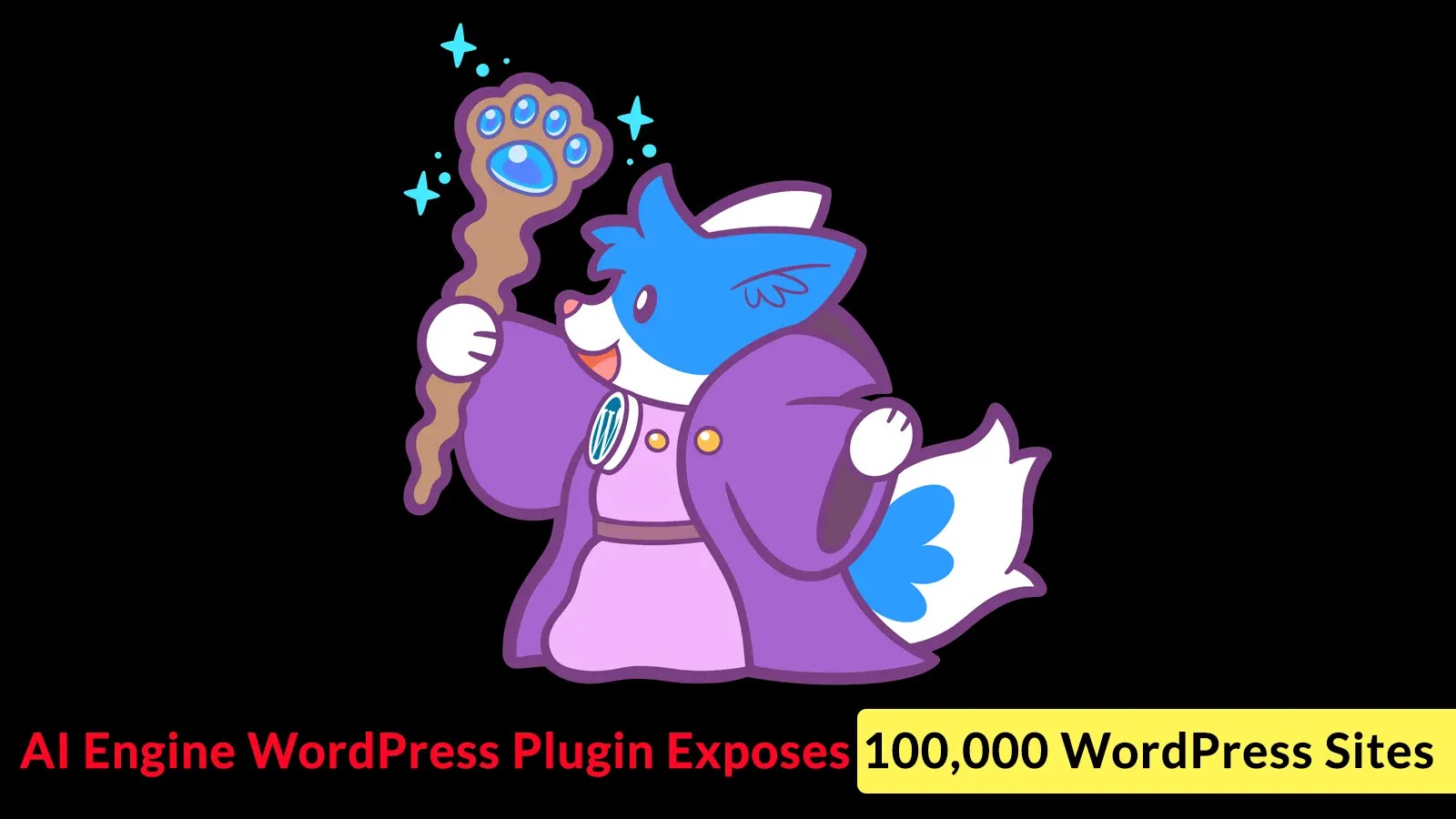
AI Engine WordPress Plugin Exposes 100,000 WordPress Sites to Privilege Escalation Attacks
A chilling revelation has emerged from the WordPress ecosystem, casting a shadow over more than 100,000 active websites. A critical vulnerability in the widely used AI Engine WordPress plugin has been identified, potentially allowing unauthenticated attackers to seize complete administrative control. This isn’t just another bug; it’s a gaping security flaw that demands immediate attention from site owners and administrators.
The Critical Flaw: CVE-2025-11749 Explained
The vulnerability, officially tracked as CVE-2025-11749, carries an alarming CVSS score of 9.8. This nearly perfect score signifies the extreme severity of the issue, indicating that exploitation is straightforward and the impact is profound. At its core, the flaw enables unauthenticated attackers – meaning anyone without prior access or credentials – to extract bearer tokens. These tokens are essentially digital keys that grant extensive permissions, and in this case, they lead directly to a privilege escalation attack.
The implications are stark: an attacker leveraging this vulnerability could gain full administrative control over a compromised WordPress site. This means they could alter content, install malicious themes or plugins, redirect traffic, steal sensitive user data, or even completely deface the website. The discovery of this critical flaw is credited to security researcher Emiliano Versini, highlighting the vital role independent researchers play in safeguarding the digital landscape.
Understanding Privilege Escalation Attacks in WordPress
Privilege escalation is a type of attack where a user or an attacker gains higher access privileges than they legitimately possess. In the context of WordPress, this typically means moving from a low-privilege user (like a subscriber or even an unauthenticated visitor) to an administrator. This particular vulnerability in the AI Engine plugin is especially dangerous because it bypasses the need for any authentication whatsoever. The attacker doesn’t need to log in or exploit another vulnerability to gain a foothold; they can simply exploit this flaw to directly obtain administrator-level access.
The mechanism of extracting bearer tokens is crucial here. Bearer tokens are often used in OAuth 2.0 and similar authentication schemes, granting access to resources based on possession of the token. If an attacker can extract these tokens without proper authorization, they can impersonate a legitimate user, or in this severe case, an administrator, and perform actions with the same level of authority.
Vulnerable Sites and the Scope of the Threat
With over 100,000 active installations, the AI Engine WordPress plugin is a popular choice for integrating artificial intelligence capabilities into WordPress sites. This widespread adoption means that a significant number of websites are currently exposed to this severe risk. Bloggers, small businesses, e-commerce stores, and other organizations relying on this plugin are all potential targets. The sheer volume of affected sites underscores the urgent need for action.
Remediation Actions: Securing Your WordPress Site
Given the critical nature of CVE-2025-11749, immediate action is paramount for all WordPress site owners utilizing the AI Engine plugin. Neglecting this vulnerability could have devastating consequences for your website’s integrity and your users’ data.
- Update Immediately: The most crucial step is to update the AI Engine plugin to the patched version as soon as it becomes available. Developers typically release security fixes promptly. Monitor the official WordPress plugin repository or the plugin’s developer website for update announcements.
- Backup Your Website: Before performing any updates, always create a full backup of your WordPress site, including files and database. This ensures you can restore your site if any issues arise during the update process.
- Review User Accounts: After updating, it’s a good practice to audit all user accounts, especially administrator accounts, for any suspicious activity or newly created unauthorized accounts.
- Implement a Web Application Firewall (WAF): A WAF can provide an additional layer of protection by filtering and monitoring HTTP traffic between a web application and the Internet. It can help detect and block malicious requests attempting to exploit vulnerabilities like this one.
- Monitor for Suspicious Activity: Regularly check your WordPress site’s access logs and security logs for any unusual login attempts, unauthorized file modifications, or other signs of compromise.
Tools for Detection and Mitigation
Leveraging the right tools can significantly enhance your ability to detect and mitigate WordPress vulnerabilities. Here are some options:
| Tool Name | Purpose | Link |
|---|---|---|
| Wordfence Security | Comprehensive security suite for WordPress, including firewall, malware scanner, and login security. | https://www.wordfence.com/ |
| Sucuri Security | Cloud-based website security platform offering WAF, malware removal, and CDN. | https://sucuri.net/ |
| WPScan | A black box WordPress vulnerability scanner for security professionals and blog owners. | https://wpscan.com/ |
| Cloudflare | CDN, DDoS protection, and WAF services for websites. | https://www.cloudflare.com/ |
Conclusion
The discovery of CVE-2025-11749 in the AI Engine WordPress plugin serves as a critical reminder of the constant vigilance required in cybersecurity. For the more than 100,000 affected WordPress sites, immediate remediation is not an option, but a necessity. Prioritize updating this plugin, implement robust security practices, and stay informed about emerging threats to protect your digital assets effectively. Proactive security measures are the strongest defense against sophisticated attacks that seek to exploit even the most seemingly innocuous software components.





